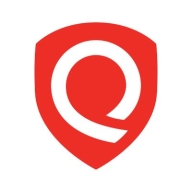

Qualys VMDR and Microsoft Intune compete in the realm of IT management, offering solutions for vulnerability management and device management, respectively. Qualys VMDR has the upper hand in vulnerability management capabilities, while Microsoft Intune excels with its integration into the Microsoft ecosystem.
Features: Qualys VMDR excels in vulnerability management, asset management, and continuous monitoring. Its cloud-based features allow for easy scheduling and robust reporting. Microsoft Intune is known for its seamless integration within the Microsoft ecosystem, providing strong device management, security policies, and application control, which enhance productivity in a Microsoft environment.
Room for Improvement: Qualys VMDR needs to improve customer support responsiveness, API speed, and integration capabilities. The interface could be more intuitive, and updates need to be quicker. Microsoft Intune requires better reporting, enhanced macOS management, and more intuitive user policy control. The user interface complexity and slow rollout of updates are also challenges.
Ease of Deployment and Customer Service: Qualys VMDR offers various deployment options, including private and hybrid clouds. However, improvements are needed in customer service response times and technical support knowledge. Microsoft Intune integrates well with public cloud setups, benefiting from Microsoft's ecosystem support, but faces challenges in deployment efficiency and clarity.
Pricing and ROI: Qualys VMDR is considered expensive but valued for its comprehensive security management and ROI through enhanced vulnerability management. Microsoft Intune is competitively priced, especially when bundled with other Microsoft services, providing significant value, particularly for larger organizations. Its integration ease and bundled offers give Microsoft Intune a pricing edge in Microsoft-centric environments.
Everything we've gained from it makes my job easier day after day, and I see value in it as an engineer.
Microsoft Intune not only saves costs by reducing the number of personnel needed but also offers a comprehensive solution for managing laptops, applications, security, individual access, and enrollment.
Importantly, when someone leaves the company, it helps protect document access on their devices.
We saw a return on investment through significant savings in time, money, and resources.
When a support ticket is submitted, it directly reaches someone with Intune support expertise.
When I contacted Microsoft, they had the same expertise, if not more, which is phenomenal because I felt heard and my problem was solved.
Sometimes, the support provided is excellent, and the representative is knowledgeable, while other times, the service needs improvement.
We usually get on calls with tech support, and they are very helpful.
The response time takes a while.
The technical support provided by Qualys is pretty good.
The scalability of Microsoft Intune is ten out of ten.
Ideally, we want to automatically segregate devices based on user properties like primary use, but currently, dynamic groups seem limited to device properties.
It supports organizations with 200 endpoints and those with more than 15,000 endpoints.
Scalability depends on the license and the number of assets being monitored.
Qualys VMDR can handle scalability, although increasing the inventory can raise the licensing costs.
Qualys VMDR's scalability is good, and the customer support is good.
We have not experienced downtime, bugs, or glitches.
It appears Microsoft Intune undergoes changes without informing customers.
Microsoft Intune has been very stable.
Qualys VMDR is stable.
Features like unlocking devices sometimes fail, and the support offered for other operating systems is insufficient.
There are communication issues, so you might start working with a feature without knowing if it will be deprecated six months from now.
Many third-party companies offer single-pane-of-glass reporting that shows you what your update environment looks like, how your patch is doing, application status, etc., but Intune's reporting is not intuitive.
It does not automate patching unless the patch management module is purchased separately.
If AI features were integrated, it could enhance the capabilities significantly.
One area where Qualys VMDR can be improved is the missing feature for deploying agents for over 1,000 assets, as we need to do it manually.
Introductory professional services, like a fast-track service, were included with our E5 membership, and there have been no additional costs.
The Intune suite and add-ons, such as batch management and remote help, are costly.
It costs approximately forty euros per user per month.
I would rate the pricing between seven to eight out of ten.
I have a notion that Qualys might be more expensive than Rapid7.
Qualys offers better pricing and is feature-packed compared to other tools.
Intune excels in configuration and compliance management for Windows 10, ensuring devices receive timely updates and adhere to organizational standards.
Dynamic groups allow us to set conditions for automatic membership, eliminating the need for user intervention or manual review and ensuring a seamless workflow.
Windows Autopatch is the most valuable because it removes the burden of patch management.
The prioritization of vulnerabilities has improved our remediation efforts by around thirty to thirty-five percent.
It impacts my workflow overall, with the patch management features as it has the missing patches listed in detail, making it easier to get a comprehensive report and providing some dashboards that offer visual representation.
Qualys VMDR offers a one-stop solution for monitoring and reporting.
| Product | Market Share (%) |
|---|---|
| Microsoft Intune | 32.6% |
| Workspace ONE UEM | 13.7% |
| ManageEngine Endpoint Central | 10.7% |
| Other | 43.0% |
| Product | Market Share (%) |
|---|---|
| Qualys VMDR | 6.7% |
| Wiz | 10.3% |
| Tenable Nessus | 7.7% |
| Other | 75.3% |


| Company Size | Count |
|---|---|
| Small Business | 116 |
| Midsize Enterprise | 46 |
| Large Enterprise | 152 |
| Company Size | Count |
|---|---|
| Small Business | 20 |
| Midsize Enterprise | 12 |
| Large Enterprise | 69 |
Microsoft Intune provides centralized management of mobile devices and applications, ensuring security, compliance, and productivity through integration with Microsoft services like Microsoft 365 and Azure Active Directory.
Organizations use Intune for managing mobile devices and applications, enhancing security and compliance across platforms. With features like single sign-on, conditional access, and zero-touch deployment via Autopilot, it facilitates efficient operations. Intune's scalability, easy enrollment, and capabilities such as remote wipe support diverse device management, offering robust data protection and efficient operation. Despite its features, improvement areas include reporting, compatibility with non-Microsoft devices, and better support for macOS and Linux devices.
What are the key features of Microsoft Intune?
What benefits should users look for in reviews?
In industries such as finance, healthcare, and education, Microsoft Intune is implemented to ensure secure and compliant device management. Companies leverage its capabilities to deploy security policies and manage both corporate-owned and BYOD environments, facilitating a unified approach to data protection and compliance.
Vulnerability Management, Detection, and Response (VMDR) is a cornerstone product of the Qualys TruRisk Platform and a global leader in the enterprise-grade vulnerability management (VM) vendor space. With VMDR, enterprises are empowered with visibility and insight into cyber risk exposure - making it easy to prioritize vulnerabilities, assets, or groups of assets based on business risk. Security teams can take action to mitigate risk, helping the business measure their actual risk exposure over time.
Qualys VMDR offers an all-inclusive risk-based vulnerability management solution to prioritize vulnerabilities and assets based on risk and business criticality. VMDR seamlessly integrates with configuration management databases (CMDB), Qualys Patch Management, Custom Assessment and Remediation (CAR), Qualys TotalCloud and other Qualys and non-Qualys solutions to facilitate vulnerability detection and remediation across the entire enterprise.
With VMDR, users are empowered with actionable risk insights that translate vulnerabilities and exploits into optimized remediation actions based on business impact. Qualys customers can now aggregate and orchestrate data from the Qualys Threat Library, 25+ threat intelligence feeds, and third-party security and IT solutions, empowering organizations to measure, communicate, and eliminate risk across on-premises, hybrid, and cloud environments.
We monitor all Unified Endpoint Management (UEM) reviews to prevent fraudulent reviews and keep review quality high. We do not post reviews by company employees or direct competitors. We validate each review for authenticity via cross-reference with LinkedIn, and personal follow-up with the reviewer when necessary.